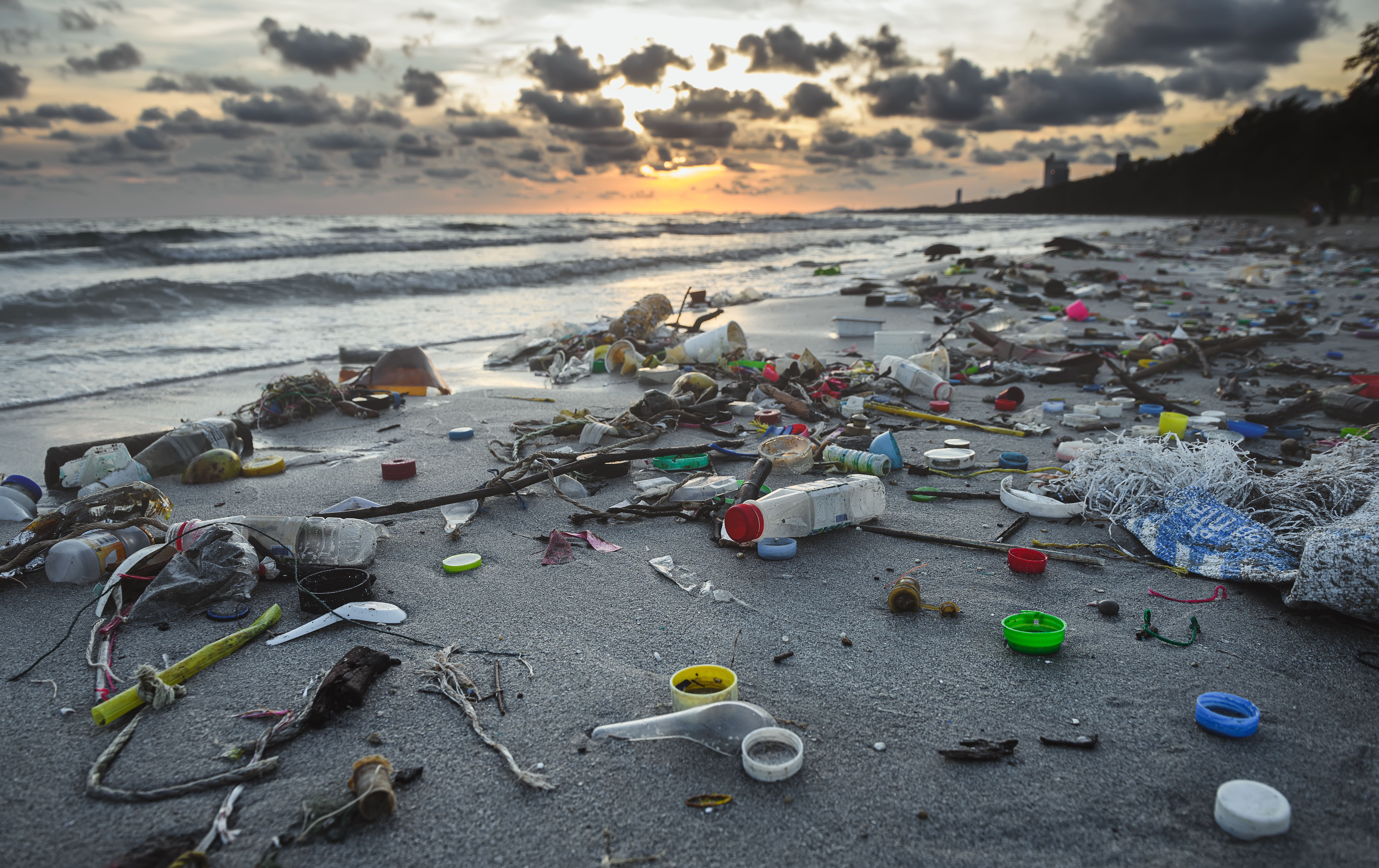News
Article
Our Brains Need Us to End Plastic Pollution
Author(s):
How can we halt the plastic crisis and end plastic pollution once and for all?
NPD stock/AdobeStock

COMMENTARY
We urge all citizens to engage in the Global Plastics Treaty. We appreciate the 2024 World Economic Forum panel on advancing the Global Plastics Treaty, aiming to unlock the systemic change needed to tackle the plastic crisis and end plastic pollution once and for all.1 As a neuroscientist and new father (Eyre), and an environmental economist with young grandchildren (Hilmi), we are deeply concerned about the potential impact of plastics on our brains. The evidence is still emerging, but the early signs are troubling.
Recent albeit preliminary studies have shown that micro- and nano-plastics can breach the blood-brain barrier,2 induce changes in behavior and inflammation in mouse brains,3 and even promote Parkinson disease–associated α-synuclein aggregation.4 We acknowledge the leading work of the Minderoo-Monaco Commission on Plastics and Human Health and their 2023 comprehensive scientific and policy review of this field.5 These findings are alarming, especially when we consider the ubiquity of plastic in our environment. It is on the top of Mount Everest, at the bottom of the Mariana Trench, in women’s breast milk, and found in brain cancers. Scientists recently discovered 100 to 1000 times more plastics in bottled water.6
Our brains are vital to our ability to think, feel, remember, be resilient, adapt, and flourish—and vital for our ability to sustain ourselves in an increasingly turbulent world.7 They are crucial to help us understand the challenges that we are facing in a high-speed changing world, to transform our behavior, and create new solutions to global challenges.
The brain health community, including neurologists, psychiatrists, neuroscientists, psychologists, and patient groups, must rally behind the forthcoming Global Plastics Treaty. This treaty represents a significant public-private policy advance, aiming to regulate the production, use, and disposal of plastics worldwide.
As leaders in the field of brain health, we have a responsibility to advocate for policies that protect our most vital organ.8 The global burden of brain disorders already surpasses that of cardiovascular diseases or cancers.9 We must raise awareness about the potential neurotoxic effects of plastics and push for more research in this area.
We are particularly worried for our new respective family members. What kind of world will they inherit if we continue on our current path? The Minderoo Foundation’s Plastic Health Map paints a sobering picture of the scale of the problem.10
We are still in the early stages of understanding the relationship between plastics and the brain. However, the precautionary principle dictates that we should take action to mitigate potential risks, even if the full extent of those risks is not yet known.
We acknowledge recent investments from Australian philanthropists in the world's first plastic-free laboratory, hence allowing much better brain science research free of plastic contaminant-producing instruments.11
By supporting this Treaty, we can help reduce the amount of plastic in our environment and, potentially, protect our brains from its harmful effects. We urge all stakeholders to engage in the Global Plastics Treaty. Let’s work together to safeguard our brains and ensure a healthier future for our children.
Dr Eyre is a fellow in brain health at Rice University’s Baker Institute for Public Policy and advisor to the Euro-Mediterranean Economists Association. Ms Hilmi is the head of environmental economics at the Monaco Science Center and advisor to the Euro-Mediterranean Economists Association.
References
1. Landing an Ambitious Global Plastics Treaty. World Economic Forum. YouTube. January 18, 2024. Accessed February 19, 2024. https://www.youtube.com/watch?v=GMcH4Wk-_d4
2. Kopatz V, Wen K, Kovács T, et al. Micro- and nanoplastics breach the blood-brain barrier (BBB): biomolecular corona's role revealed. Nanomaterials (Basel). 2023;13(8):1404.
3. Gaspar L, Bartman S, Coppotelli G, Ross JM. Acute exposure to microplastics induced changes in behavior and inflammation in young and old mice. Int J Mol Sci. 2023;24(15):12308.
4. Liu Z, Sokratian A, Duda AM, et al. Anionic nanoplastic contaminants promote Parkinson's disease-associated α-synuclein aggregation. Sci Adv. 2023;9(46):eadi8716.
5. Landrigan PJ, Raps H, Cropper M, et al. The Minderoo-Monaco Commission on Plastics and Human Health. Ann Glob Health. 2023;89(1):23.
6. Qian N, Gao X, Lang X, et al. Rapid single-particle chemical imaging of nanoplastics by SRS microscopy. Proc Natl Acad Sci U S A. 2024;121(3):e2300582121.
7. Eyre HA, Hynes W, Ayadi R, et al. Brain capital is crucial for global sustainable development. Lancet Neurol. 2024;23(3):233-235.
8. Smith E, Ali D, Wilkerson B, et al. A brain capital grand strategy: toward economic reimagination. Mol Psychiatry. 2021;26(1):3-22.
9. Davenport L. Global burden of brain disorders surpasses CVD, cancer. Medscape. July 12, 2023. Accessed February 19, 2024. https://www.medscape.com/viewarticle/994287?form=fpf
10. Plastic health map. Minderoo Foundation. Accessed February 19, 2024. https://www.minderoo.org/plastic-health-map
11. UQ lab to detect and measure tiny plastic particles in the human body. University of Queensland News. March 11, 2022. Accessed February 19, 2024. https://www.uq.edu.au/news/article/2022/03/uq-lab-detect-and-measure-tiny-plastic-particles-human-body





